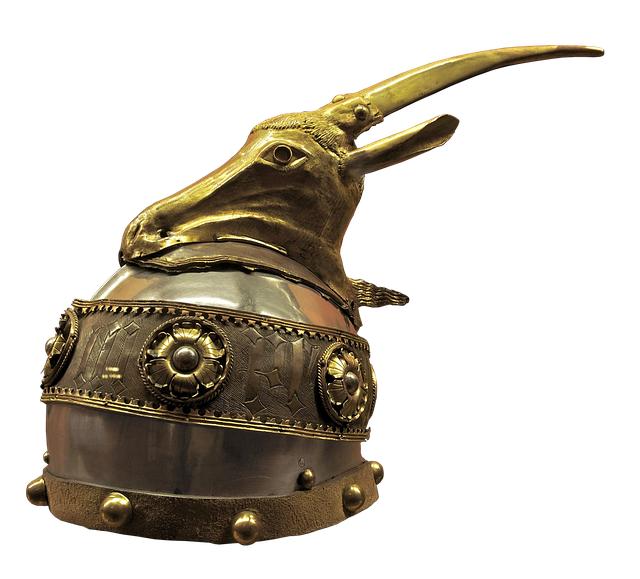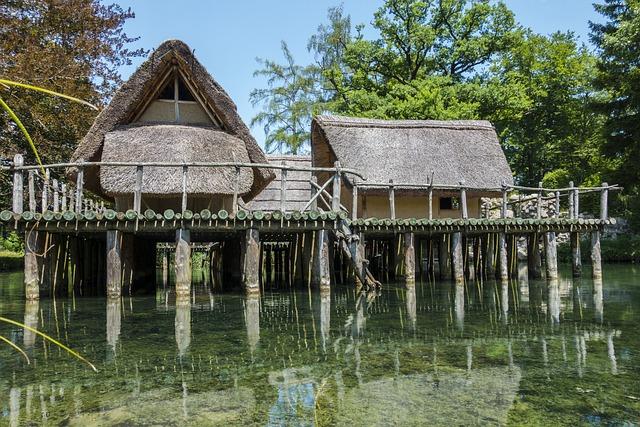In a groundbreaking discovering that reshapes our working out of prehistoric societies in North Africa, archaeologists have unearthed proof of a in the past unknown Neolithic neighborhood in Morocco. This revelation now not most effective highlights the importance of North Africa within the broader context of Mediterranean prehistory but additionally demanding situations longstanding narratives that essentially targeted on Europe and the Close to East. The findings, detailed in a contemporary learn about revealed on Phys.org, disclose a posh society with advanced agricultural practices and complicated social constructions. As researchers delve deeper into this historic civilization, they discover insights that can light up the interconnectedness of human cultural building around the Mediterranean area throughout the Neolithic technology. This newsletter explores the results of this discovery whilst inspecting the way it contributes to our evolving working out of historic human existence in north Africa and its interactions with neighboring areas.
Discovery of a New neolithic Society in Morocco and Its Importance
The hot discovery of a in the past unknown Neolithic society in Morocco has opened a brand new bankruptcy in our working out of North Africa’s intensive position in Mediterranean prehistory. Archaeological findings point out that this society, which thrived between 4000 and 2500 BCE, possessed complex strategies of farming, crafting, and social group. the uncovering of vital artifacts corresponding to pottery, equipment, and remnants of settlements suggests a posh neighborhood engaged in agriculture, animal husbandry, and business networks that will have influenced neighboring areas. Key components of this to find come with:
- leading edge Farming Tactics: Proof of crop cultivation highlights their agricultural sophistication.
- Creative Expressions: Pottery and carvings point out a wealthy cultural existence.
- Industry Networks: Pieces from far away areas counsel intensive business connections.
This discovery now not most effective complements our comprehension of Neolithic existence in Morocco but additionally demanding situations preconceived notions in regards to the building of early societies within the Mediterranean. By way of integrating archaeological proof with previous narratives, researchers at the moment are in a position to higher perceive the dynamics between other cultures. The findings urged a re-examination of the interactions amongst North African societies and their opposite numbers around the Mediterranean basin, doubtlessly reshaping the map of prehistoric civilization. A comparative evaluation of artifacts came upon can additional illustrate the importance of this society:
| Artifact kind | Description | importance |
|---|---|---|
| Pottery | Ornamental and practical wares | Signifies on a regular basis existence and inventive tradition |
| Gear | flint and stone implements | Suggests complex crafting and searching talents |
| Agreement Stays | Foundations of dwellings | Finds social group and neighborhood construction |
Cultural Practices and Artifacts Exposed from the Neolithic Website online

the excavation on the newly known Neolithic web page in morocco has published a wealthy tapestry of cultural practices that light up the day-to-day lives and ideology of its population. a number of the artifacts recovered, equipment and pottery fragments supply an important insights into their craftsmanship and technological developments. initial analyses counsel that those communities engaged in refined agricultural practices, as evidenced via the presence of:
- Floor stone equipment: Used for grinding grains.
- Ornamental pottery: That includes intricate designs,indicating creative expression.
- Animal stays: Suggesting domestication and a reliance on farm animals.
Moreover, proof of communal constructions issues to a society arranged round collective residing. The format of those constructions, along side burial websites containing decorative pieces, suggests a machine of social stratification and ritualistic practices, most likely related to their non secular ideals. A abstract of a few important findings is printed under:
| Artifact Sort | Importance |
|---|---|
| Pottery Shards | Point out business networks and cultural exchanges. |
| Bone equipment | Spotlight craftsmanship and useful resource usage. |
| Fireplace Pits | Recommend communal cooking practices and social gatherings. |
Implications for Figuring out North Africa’s Function in Mediterranean Prehistory

The hot discovery of a in the past unknown neolithic society in Morocco sheds new gentle at the complexities of Mediterranean prehistory and North Africa’s pivotal position in it.This discovering now not most effective demanding situations present narratives in regards to the building of early agricultural communities but additionally underscores the area’s connectivity with broader Mediterranean cultures. Researchers counsel that the leading edge agricultural practices noticed on this society will have influenced neighboring areas, selling a an important alternate of concepts, applied sciences, and items around the Mediterranean basin. As those connections turn out to be clearer, they disclose a tapestry of interactions that had been in the past underestimated in historic accounts.
The consequences of this discovery for working out North africa’s contributions to mediterranean prehistory are profound, prompting a reassessment of the cultural and financial dynamics of the technology. Key sides come with:
- Industry Networks: Enhanced visibility of business routes that interconnected North Africa with Europe and the Close to East.
- Cultural Alternate: Proof of shared practices and inventions, corresponding to pottery kinds and agricultural ways.
- Inhabitants Actions: Insights into migration patterns that can have formed the demographic panorama of the Mediterranean.
| discovery | Implication |
|---|---|
| New agricultural strategies | Affect on neighboring societies’ farming practices |
| Artifacts with Mediterranean motifs | Imaginable business hyperlinks with different coastal cultures |
| Agreement patterns | Figuring out of city building in prehistoric contexts |
Environmental Components Influencing the Building of Neolithic Societies

the invention of a in the past unknown Neolithic society in Morocco underscores the importance of environmental elements in shaping human building throughout this pivotal duration. The area’s numerous geography, starting from the coastal plains to the mountainous spaces, supplied more than a few sources that had been an important for agreement and agriculture. key environmental components influencing the evolution of those societies incorporated:
- Local weather Variability: Fluctuations in local weather impacted the provision of water and arable land, encouraging communities to evolve their agricultural practices.
- Plant life and Fauna: The presence of untamed grains and domesticated animals facilitated the transition from a nomadic way of life to settled farming.
- Herbal Sources: Proximity to rivers and wealthy soil enabled the improvement of irrigation ways, fostering agricultural productiveness.
Additionally,the interplay of those environmental elements created a novel panorama that contributed to the social constructions and day-to-day lifetime of Neolithic communities. The archaeological findings in Morocco disclose a nuanced working out of the way those societies thrived thru useful resource control and innovation. An outline of came upon web page options highlights their adaptability to the habitat:
| Characteristic | Description |
|---|---|
| Agreement Format | Proof of arranged housing constructions suggesting communal residing. |
| Agricultural equipment | Hoard of grinding stones indicating complex crop processing strategies. |
| Pots and Boxes | Garage vessels discovered, reflecting meals preservation ways. |
Long term Analysis Instructions for Sustainable Archaeological Practices in North Africa

As new discoveries proceed to make clear the intricacies of North african prehistory,it turns into more and more very important for analysis to concentrate on sustainable archaeological practices that honor each the area’s heritage and its environmental context. Long term research must discover integrative methodologies that mix conventional archaeological ways with recent applied sciences. This is able to contain the appliance of far flung sensing applied sciences and geoarchaeology, which is able to make stronger the potency of excavations and decrease the environmental footprint. Moreover, researchers must prioritize neighborhood engagement via taking part with native populations to be sure that archaeological paintings serves each tutorial and cultural preservation functions.
To lead those sustainable practices, it can be really useful to determine a framework that addresses crucial spaces of study, together with:
- Conservation of archaeological websites: Growing methods to offer protection to websites from fashionable threats, corresponding to urbanization and local weather alternate.
- Ecological have an effect on checks: Accomplishing thorough opinions of the way archaeological actions impact surrounding ecosystems.
- Training and outreach techniques: Developing projects that inform local communities in regards to the importance in their heritage and the significance of sustainable practices.
Additionally,development interdisciplinary collaborations between archaeologists,environmental scientists,and native stakeholders will create richer,extra knowledgeable analysis environments. A proposed framework for collaboration can also be summarized within the following desk:
| Stakeholder | Focal point Space | Collaborative Result |
|---|---|---|
| Archaeologists | web page excavation and research | Knowledge sharing and preservation |
| Environmental Scientists | Ecological checks | Sustainable practices |
| Native communities | Cultural heritage | Neighborhood-driven projects |
The Want for Collaborative Efforts in Heritage Preservation and Training

The hot discovery of a in the past unknown Neolithic society in Morocco highlights the significance of collaborative efforts in each heritage preservation and training. As archaeologists unearth historic remnants and practices, they disclose the intricate connections between North African cultures and their Mediterranean opposite numbers. Interdisciplinary collaboration brings in combination researchers from more than a few fields, together with archaeology, anthropology, and historical past, enabling a holistic working out of the way such societies functioned and interacted. This cooperative means now not most effective enriches our wisdom but additionally fosters a deeper thankfulness for the varied cultures that contributed to the area’s historic tapestry.
Additionally, attractive native communities in those preservation efforts is very important for making sure that the data received is disseminated successfully. By way of involving citizens in archaeological initiatives and academic projects, we will be able to foster a way of possession over their heritage. Tasks might come with:
- Workshops at the importance of archaeological findings
- Cultural alternate techniques with neighboring areas
- collaborative exhibitions in native museums
Such collaborative frameworks now not most effective support the learning sides of heritage preservation but additionally empower local populations to have a good time and care for their cultural id as they navigate the complexities of a abruptly converting global.
In Conclusion
the hot discovery of a in the past unknown Neolithic society in Morocco marks a vital development in our working out of North Africa’s pivotal position within the Mediterranean’s prehistoric panorama. This discovering now not most effective sheds gentle at the complexity of social constructions and cultural practices in historic communities but additionally demanding situations present narratives that experience steadily marginalized the contributions of North African societies to broader Mediterranean trends. As researchers proceed to excavate and analyse those wealthy archaeological websites, we will be able to look ahead to a deeper appreciation of the interconnectedness that outlined human studies throughout the Neolithic technology. This landmark discovery opens new avenues for scholarly inquiry and invitations us to rethink the importance of north Africa in shaping the prehistory of the mediterranean area.
Source link : https://afric.news/2025/02/22/previously-unknown-neolithic-society-in-morocco-discovered-north-africas-role-in-mediterranean-prehistory-phys-org/
Writer : Sophia Davis
Submit date : 2025-02-22 23:46:00
Copyright for syndicated content material belongs to the related Source.



